Killer whales of Sea Lion Island
Activity
Timing of sightings
Distribution of total killer whales sighting
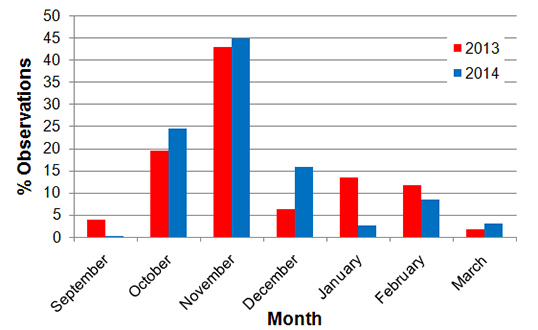
The percentage of sightings has a main peak in November, at the end of the elephant seal breeding season, and when the concentration of weaned pups raises and get to its maximum. There is also a secondary peak in February, when the sea lion pups of the year start getting into the water.
Distribution of the number of killer whale sightings per hours of observations
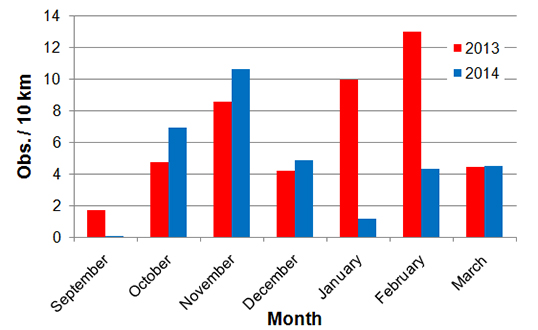
Taking into account the field work effort (number of hours of observation), both peaks of presence, November and February, are confirmed, but the graph shows also notable differences between the seasons. In particular the February peak was more evident in 2013.
Distribution of killer whale sightings during the day
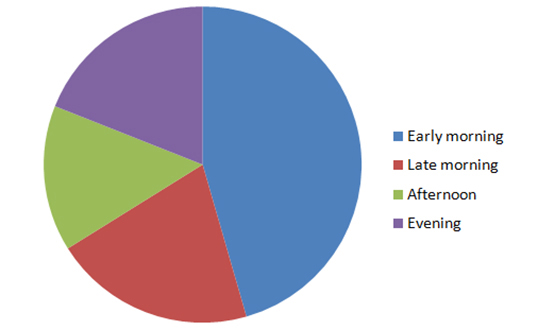
Killer whale sigthings are more frequent during the first part of the day, in the early morning. This may be related to the night activity of the killer whales, that we are not able observe at the moment. This higher presence in the early morning and and evening compared to the rest of the day may be related to the elephant seal activity. Elephant seal weanlings usually rest on land during the day, enter water late in the evening, stay in the water during the night and until the early morning.
Spatial distribution of sightings
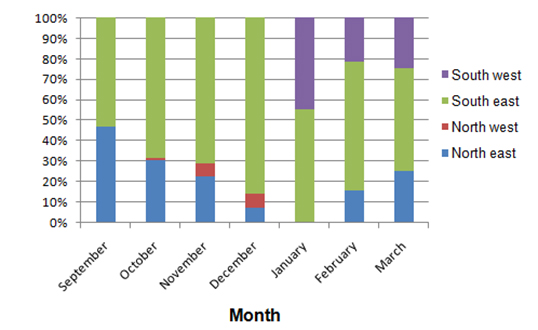
The spatial distribution of killer whales sightings changes along the season, and it is related to the distribution of the potential preys. During November and December sighting are more frequent in the south east part of the island, where elephant seal weanlings are usually concentrated. Later in the season sightings are concentrated in the south west area, and in particular in front of the flat rocks area where southern sea lion breed.
Effect of environmental factors
Effect of the tide level
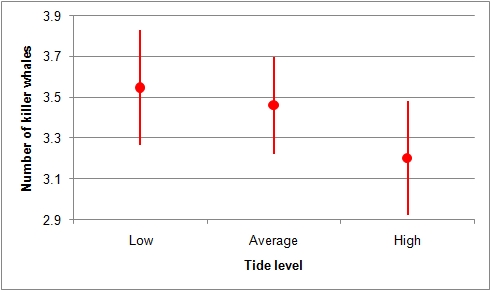
Red dot is mean number of killer whales observed, red bars are 95% confidence interval. When bars did not overlap there is a statistically significant difference. Although killer whales are more numerous at high tide there is much overlap in the confidence intervals, so the effect of tide is not very strong.
Effect of the surf
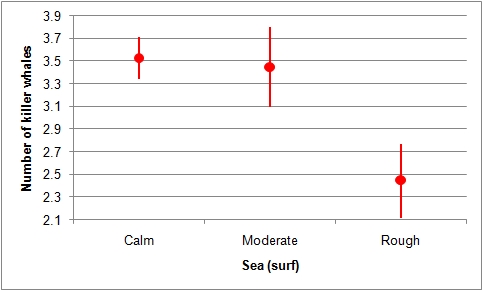
There is a significant reduction in the number of killer whales observed when the surf is strong. Killer whales are usually observed when the sea is calm.
Effect of the swell
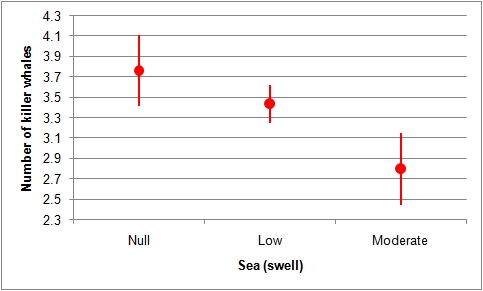
There is a strong effect of swell. Number of killer whales observed decreases with increasing swell.
